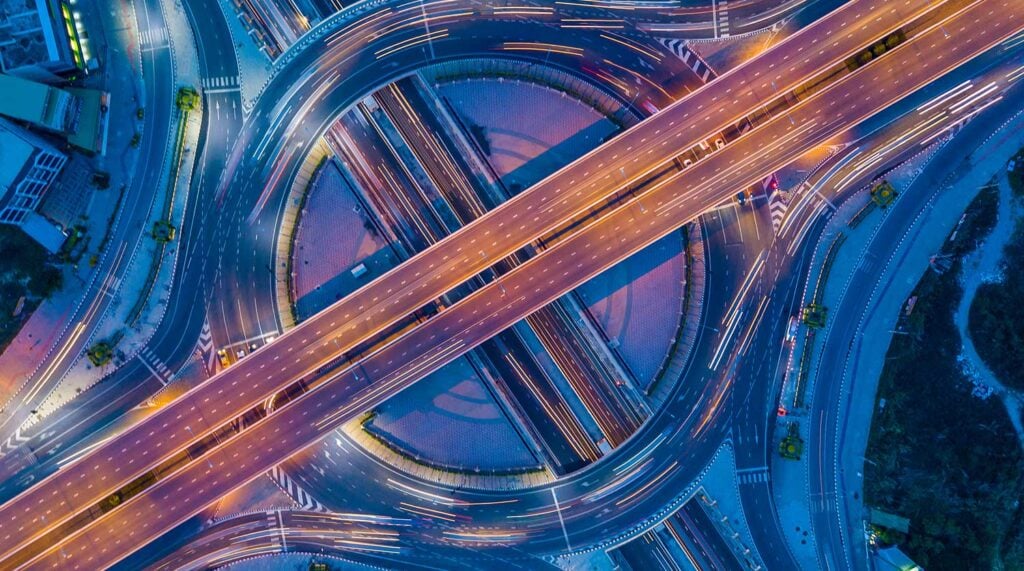Location Intelligence: The Road Ahead
February 2, 2023

What’s next for location data? There are several trends and events that are likely to impact the location intelligence industry in the next 12 to 24 months. From engineering what post-pandemic societies look like to researching the best approaches to combat climate change, the use cases for location data are seemingly endless.

The Great Re-engagement
As communities continue to reopen, civic leaders will need to re-evaluate the services, amenities, and infrastructure their post-pandemic residents and workers require. Retailers, eateries, grocery stores, gyms, and other services, whether they are national chains or locally owned, will lean on the insights gained from location data to better understand customers’ preferences, forecast peak periods, monitor supply chain operations, optimize staffing levels, manage inventory, and more.
Similarly, urban downtown centers will need to adjust for reductions in onsite workforces due to remote and hybrid work arrangements. Location data will become more important as Americans resume commuting to offices (even if only a few days a week), as urban planners seek new uses for high rises designed for office and retail purposes. Some cities, such as San Francisco, are already considering whether some of these buildings could be reworked to address regional housing crises.
Location Data Shifts into Overdrive
The increasing incorporation of computerized systems in automobiles – there can be more than 3,000 semiconductors in a 2022 model car – will shift the volume of location data into overdrive. In addition to the location data that can be gleaned from a mobile device, navigation, safety, and other systems within a vehicle will unleash new use cases for location data.
One obvious example is the insurance industry, which, based on location and other data generated from a car’s activity, would be able to better calculate rates based on actual driving behavior. Additionally, commercial real estate developers and city planners could use an automobile’s location data to determine where to place parking garages or EV charging stations.
Retailers Hope for Rebound
Retailers can mitigate supply chain disruptions as much as possible by leveraging location intelligence to monitor activity at every tier of their supply chain. Since location data is gathered and processed in near real-time, it allows companies to quickly identify any anomalies or disruptions in their supply chain and address these issues right away before they snowball into larger problems. This gives companies increased visibility into their manufacturing and logistics operations, allowing them to better oversee the movement of products from the factory floor to store shelves.
Retailers can also use location data to gain a greater understanding of their target audiences. By seeing the various places their customers choose to spend their time and money, whether that’s another type of store, a professional sports game, a music concert, etc., retailers can identify consumer interests, trends, and preferences and tailor their products and services to meet these expectations and provide a superior customer experience. Furthermore, retailers can use location intelligence to more accurately forecast consumer demand for particular products, reducing excess inventory.
For a Good Cause
Because it uniquely reflects human movement at scale, location data also is being used to address societal challenges, like climate change, manage natural disasters, such as wildfires, and mitigate global pandemics, like COVID-19. By analyzing location data with other input, researchers, scientists, and academics can not only document changes that have already occurred but also forecast future scenarios to determine the best path forward.
Climate change is not something that can be solved in the data lab. It will require action by everyone on the planet to change the way they live their lives as well as the products they use and how they consume them. Location intelligence can, however, identify regions where specific activities could or should take place to help reverse negative climate trends. For example, location data can identify locations for rebates or subsidies for the installation of solar panels, determine where extreme weather conditions are predicted to become worse, and pinpoint stretches of shoreline that need protection from erosion.
Relatedly, location data is instructive in not only identifying areas that are hot spots for catastrophic natural disasters but also in identifying evacuation routes and patterns, allocating services and other resources for the displaced, and determining whether to rebuild any structures that were destroyed. Location data, when combined with other sources such as hotel stays, restaurant purchases, and emergency services registries, can provide information about groups of people taking similar action (evacuating) simultaneously and offer insight into real or projected outcomes.
These are just a handful of ways that location data can be used to improve the way we live. If you’re interested in learning more about how organizations are using location data to better the bottom line, improve communities, or prepare for the next natural disaster, check out our case studies.
This blog is part of our five-post blog series on location intelligence that aims to educate readers about location data and its uses, while also dispelling common misconceptions. To learn more about how your organization can benefit from the use of location intelligence, contact an expert from Gravy Analytics today.




